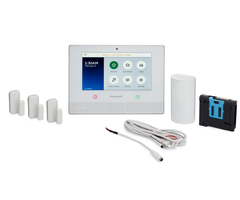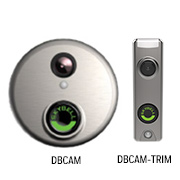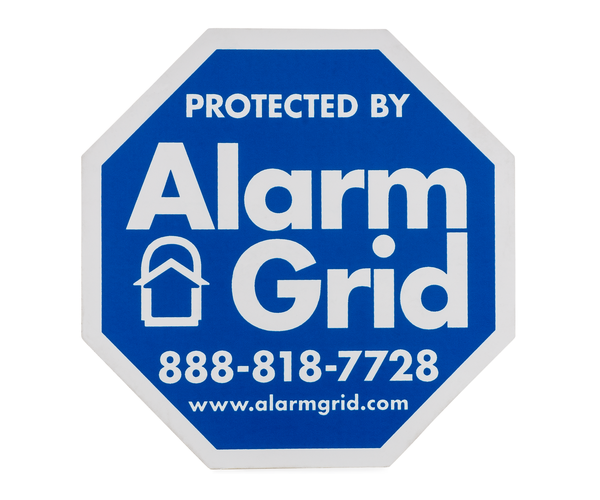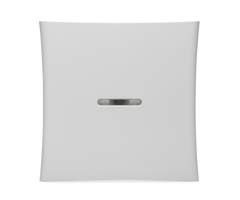We have very recently seen many customers looking for security systems that support the Apple HomeKit platform. Although the options are still rather limited, you can absolutely find a great HomeKit Security System. Today, we are going to discuss the options that are currently available.

If you aren't familiar with Apple HomeKit, it is the premier smart home and automation platform for iOS users. The market is filled with HomeKit devices that you can include with a HomeKit network. Once you have properly configured your HomeKit network, you can then control your devices remotely using Siri voice commands on your iPhone. You can also create HomeKit Smart Scenes to have your devices activate automatically based on a schedule or with predetermined events.
Integrating your security system with your HomeKit network opens up the door for some extremely useful automation functions. You can have devices on your network automatically respond to actions on your security system, such as arming/disarming or going into alarm. As your security system will likely be an important fixture in your home or business, it is likely that you will want to have your HomeKit devices respond to the events on your alarm system. That is why having a HomeKit Security System is so useful.
At this time, there are only two (2) security systems that support the Apple HomeKit platform. We are very hopeful that more systems will join this elite club in the near future. But for now you have the choice of two systems. Of these two, we highly recommend one over the other. But we will discuss both of these alarm panels so that you can learn all about the HomeKit System options.
 The Honeywell Lyric Alarm System is currently our top pick as a HomeKit Security System. This is a very powerful alarm panel that includes support for 128 wireless zones, a built-in 7-inch full-color touchscreen, integrated WIFI, support for encrypted Honeywell SiX Series Sensors, and backwards compatibility with Honeywell 5800 Series Sensors. The panel connects with the Resideo AlarmNet Servers for monitoring service and access to the Total Connect 2.0 platform.
The Honeywell Lyric Alarm System is currently our top pick as a HomeKit Security System. This is a very powerful alarm panel that includes support for 128 wireless zones, a built-in 7-inch full-color touchscreen, integrated WIFI, support for encrypted Honeywell SiX Series Sensors, and backwards compatibility with Honeywell 5800 Series Sensors. The panel connects with the Resideo AlarmNet Servers for monitoring service and access to the Total Connect 2.0 platform.
What's great about the Lyric is the fact that the system offers intuitive end user programming. This means that the end user can easily set up their own security system, without needing to hire an installer. You can quickly and conveniently make programming changes to your Lyric System when needed, and you can save a huge amount of money by setting up the system yourself. With a new Lyric Panel, you will have access to the default Installer Code (4112) to make your own system changes whenever you want.
You will also find that it is incredibly easy to set the Lyric up with your Apple HomeKit network. In order to activate HomeKit on the Lyric, you must get the system monitored by an alarm company. Any of the monitoring plans offered from Alarm Grid are perfect for this. You can even use a monitoring plan that is IP only, as opposed to a cellular monitoring plan. Although cellular monitoring is always recommended for optimal reliability, many users use IP only monitoring plans to keep expenses as low as possible.
Bottom Line: The Lyric is the best HomeKit Security System of 2020.
 At first glance, the DSC Iotega looks like an exceptional HomeKit System. It supports 128 wireless zones, and you can use PowerG Sensors, which are arguably the best in the security industry. The Iotega is also currently the only HomeKit Alarm Panel that can be used with the Alarm.com service, which many experts view as the go-to monitoring and automation platform. In those aspects, the Iotega fills some unique niches that are left unfulfilled by the Lyric.
At first glance, the DSC Iotega looks like an exceptional HomeKit System. It supports 128 wireless zones, and you can use PowerG Sensors, which are arguably the best in the security industry. The Iotega is also currently the only HomeKit Alarm Panel that can be used with the Alarm.com service, which many experts view as the go-to monitoring and automation platform. In those aspects, the Iotega fills some unique niches that are left unfulfilled by the Lyric.
But the Iotega has some glaring weaknesses. The system's biggest issue is that it offers no local end user programming. You cannot program the system without the help of a monitoring company. Any time you want to make a change to the system settings or add/edit/delete a sensor, you will need to contact your alarm company for help. This includes situations where you are just making a minor settings adjustment. The Iotega is known for being notoriously inconvenient in that aspect, and this limitation rightfully turns many potential customers away.
The aesthetics of the DSC Iotega are also a weakness. The system is just a simple black box with a numeric touchpad that appears when activated. There is no touchscreen, and all commands are made with numeric entries. This can be very non-intuitive for new users, and understanding the system is often very difficult. DSC does offer a touchscreen keypad for the Iotega, but most users prefer getting a system that already has a touchscreen built-in.
There are times where (unfortunately) the Iotega is the best option. PowerG Sensors offer a better wireless range than anything that is available for the Lyric. And if you need to build around the Alarm.com platform due to something like existing Alarm.com Cameras, then you may be tempted to get started with the Iotega. The fact remains that this is currently the only one of the HomeKit Alarm Systems that can be used with PowerG Sensors and Alarm.com.
Bottom Line: Only use the DSC Iotega as a HomeKit System in extremely niche scenarios.
If you have any questions about the Honeywell Lyric, the DSC Iotega, or any of the other products on our site, please reach out to us. We are also happy to discuss our monitoring services if you have any questions or concerns. The best way to reach us is to email support@alarmgrid.com. We maintain support hours from 9am to 8pm ET M-F. We look forward to hearing from you!













 The Honeywell Lyric Alarm System is currently our top pick as a HomeKit Security System. This is a very powerful alarm panel that includes support for 128 wireless zones, a built-in 7-inch full-color touchscreen, integrated WIFI, support for encrypted
The Honeywell Lyric Alarm System is currently our top pick as a HomeKit Security System. This is a very powerful alarm panel that includes support for 128 wireless zones, a built-in 7-inch full-color touchscreen, integrated WIFI, support for encrypted  At first glance, the DSC Iotega looks like an exceptional HomeKit System. It supports 128 wireless zones, and you can use
At first glance, the DSC Iotega looks like an exceptional HomeKit System. It supports 128 wireless zones, and you can use 

